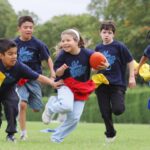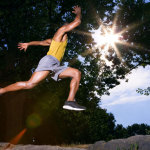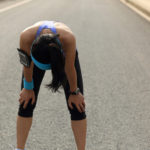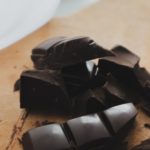Alcohol, Athletes & Pressure to Drink
Ask any coach or college athletic director, and you’ll hear concern about alcohol and athletes. Rightfully so. Alcohol and athletics is a dangerous duo, associated with negative consequences including hangovers, nausea and vomiting, poor grades in school, fights, arguments, memory loss, driving under the influence, and trouble with the law—to say nothing of injuries. Yet, tailgating before football games, quenching thirst at the pub after a team workout, and celebrating victories with champagne is perceived as the norm.
College athletes are more likely to drink than non-athletes. Serious recreational runners drink more than their sedentary counterparts. Unfortunately, alcohol is a highly addictive substance and is the most abused drug in the United States, more so than steroids. Prolonged drinking can damage the liver, heart, and brain, and result in cirrhosis, pancreatitis, irregular heartbeats, stroke, and malnutrition. More oral cancer is seen among those who are just moderate drinkers as compared to abstainers.
What can be done about this problem?
To address the problem of alcohol abuse among student-athletes, many college campuses are educating students about social norms—the beliefs about what is normal and expected in social situations. For example, despite popular belief, “everyone” does not drink nor do “most students” get drunk all the time.
A 1999 survey at Southern Methodist University asked these four questions to students on a Friday about alcohol use on the previous night:
Did you drink last night?
Did you get drunk last night?
What percentage of SMU students do you think drank last night?
What percentage of SMU students do you think got drunk last night?
The answers showed major misperceptions about alcohol norms:
– Only 20% of students surveyed reported drinking the previous night, yet they believed that over half drank.
– Only 8% reported getting drunk, yet they believed at least one-third got drunk.
– Of students who drank, most reported consuming only a few drinks per week. Yet they believed most students were drinking 10 to 15 drinks per week.
– 35% reported abstaining from alcohol, but very few believed that many of their peers were non-drinkers (Social Norms Campaign)
With ongoing social norm education, students will actually change their drinking practices. For example, a three-year social-norm education program targeted Division III athletes in a NY State college. It contributed to a 30% drop in both excessive alcohol consumption and the negative consequences of drinking. Among student-athletes with the highest exposure to the program, personal alcohol misuse dropped 50%. (1) Given that athletes are often role models, this change can have a positive impact on the entire campus and potentially (eventually) our entire sports society.
Minimizing negative consequences
If you are among the athletes who choose to drink large amounts of alcohol, take note:
• Alcohol is a depressant. Apart from killing pain, it offers no edge for athletes. You can’t be sharp, quick, and drunk. Pre-competition alcohol has a deleterious effect on reaction time, accuracy, balance, eye-hand coordination and endurance. It will not help you exercise faster, stronger, longer.
• Late night partying that contributes to sleep deprivation before the next morning’s event hurts performance.
• Alcohol is a poor source of carbohydrates. You can get loaded with beer, but your muscles will not get carbo-loaded. A 12-ounce can of beer has only 14 grams of carbs, as compared to 40 grams in a can of soft drink. Eat pretzels, thick-crust pizza or other carbs along with the beer.
• Alcohol on an empty stomach can quickly lead to a drunken stupor. Be wise; enjoy the natural high of exercise rather than get brought down by a few post-exercise beers.
• Alcohol has a diuretic effect–the more you drink, the more fluids you lose. This is bad for recovery and the next exercise bout. While low-alcohol beer allows for proper rehydration, regular beer sends athletes running to the bathroom. One study showed that athletes who drank beer eliminated about 16 ounces more urine (over the course of 4 hours) than those who drink low-alcohol (2%) beer or alcohol-free beer. (2)
• Your liver breaks down alcohol at a fixed rate (~1 can beer or 4 ounces wine per hour). Exercise does not hasten the process, nor does coffee. Caffeine just makes you a wide-awake drunk.
• Drinks that contain congeners—whiskey, cognac, and red wine—are more likely to cause hangovers than other alcoholic beverages. The best hangover remedy is to not drink excessively in the first place. But if you have a hangover, drink a salted beverage with carbs, such as Gatorade or brothy chicken noodle soup.
• The calories in alcohol are easily fattening. People who drink moderately tend to consume alcohol calories on top of their regular caloric intake. These excess calories promote body fat accumulation.
• Alcohol stimulates the appetite, making it harder to feel full. If you are trying to maintain a lean machine, abstaining is preferable to imbibing.
The good news
Alcohol in moderation can have health benefits. Red wine, for example, contains health-protective phytochemicals that may reduce the risk of heart disease. What’s “moderation”?—two drinks per day for men, and one for women. And have at least one glass of non-alcoholic beverage for every drink…
This article has been provided by Nancy Clark MS, RD who counsels casual exercisers and competitive athletes at Healthworks, the premier fitness center in Chestnut Hill, MA (617-383-6100). Nancy Clark’s Sports Nutrition Guidebook and her food guides for new runners, marathoners, soccer players and cyclists are available via www.nancyclarkrd.com. See also sportsnutritionworkshop.com for information about upcoming and online workshops.
References
1. Perkins H and Crais D. 2006. A Successful Social Norms Campaign to Reduce Alcohol Misuse Among College Student-Athletes. J. Stud Alcohol 67:880-889.
2. Sherriffs, S., and R. Maughan. 1997. Restoration of fluid balance after exercise-induced dehydration: Effects of alcohol consumption. J Appl Physiol 83(40):1152-1158.





